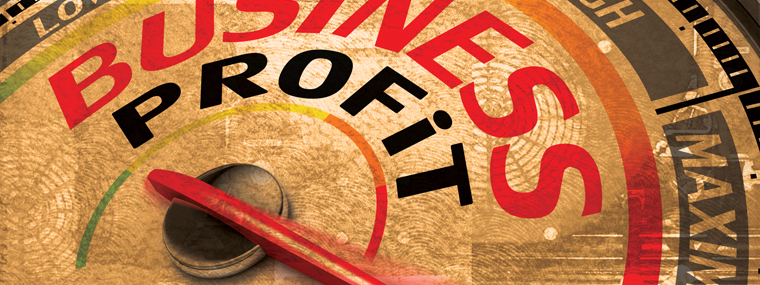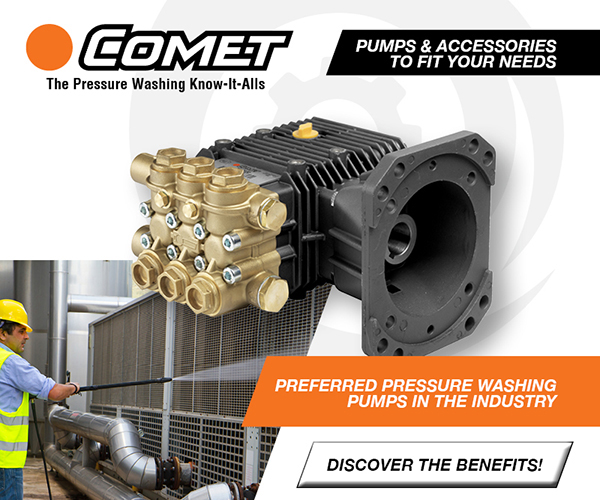
Financial: Write-off Basics and Profits
By Mark E. Battersby / Published October 2015

As many pressure cleaning contractors, equipment dealers, and business owners have learned, our ever-changing tax rules make it difficult to get the full tax deduction they are entitled to for the tools, equipment, and even the pressure washing equipment that are so essential to every pressure cleaning business. The so-called “Extenders” tax law, which passed late in 2014, did extend the first-year write-off for so-called “Section 179 expenses” and “bonus” depreciation, but only for the 2014 tax year.
Unless new legislation is passed, most contractors, dealers, and business owners must be content with the traditional methods for recouping the cost of business property and equipment. Although the current tax rules allow expenditures of up to $25,000 to be expensed or written off in the current tax year, the cost of most tools, equipment above that amount can only be recovered via depreciation deductions.
Depreciation Fine Print
Although land usually isn’t depreciable since it doesn’t have a definite life, the cost of “improvements” to that land as well as other business property can be depreciated so long as it has a useful economic life exceeding one year and wears out or will become obsolete over time.
In general, the Modified Accelerated Cost Recovery System (MACRS) is used to calculate depreciation deductions for U.S. tax purposes. Depreciation begins when business property is placed in service; in other words, when it is ready and available for use.
In addition to knowing when property was placed in service and determining the amount of depreciation allowed, the pressure cleaning operation’s “basis” in the property as well as its “class” must be determined. Basis is the operation’s investment in the depreciable property and the initial basis depends on how it was acquired. With purchased property, for instance, the basis is generally its cost.
MACRS dictates the class and depreciation method for all business property, prescribing the number of years over which the investment in depreciable business property may be recovered. Nine different property classes are defined under the MACRS General Depreciation System. In some situations, a pressure cleaning business can choose to use an Alternative Depreciation System (ADS) for some property. Figuring depreciation under the ADS method essentially slows annual depreciation, preserving larger depreciation deductions for later years.
Identifying the proper “class” of business property is essential under the MACRS depreciation system. Trucks and other assets are usually classed as five-year property. Machin-ery and equipment fall into the seven-year category and commercial buildings have a 39-year “useful” life.
Whose Equipment Is It?
Depreciation deductions and write-offs can be claimed only by the property’s “owner.” Since it is not unusual for an owner or shareholder to purchase the equipment used by the pressure cleaning business, the IRS often sees a problem.
This type of transaction is not a problem for a sole proprietorship since the business and the owner are one in the same. An incorporated pressure cleaning business or a partnership, on the other hand, may run afoul of the tax rules. After all, the depreciation deduction belongs to the owner, as would the in-terest on the loan or any lease payments.
The dilemma commonly arises when a business owner can’t buy the equipment in the business’s name because of credit issues or when the equipment is purchased before the corporation or partnership exists. Our tax laws recognizes the second issue, allowing a tax-free transfer of equipment. Most states also contain sales tax exemption for such transfers.
There may be other options, such as retaining ownership of a vehicle and having the business reimburse the operator for the business use, or having the business reimburse the owner for the purchase. To maintain flexibility, every pressure cleaning business should ensure all lease contracts or loan agreements allow the transfer of ownership.
Repair Versus Replacement
There has long been an argument whether certain expenditures are “repairs,” or whether they are actually “capital expenditures,” that must be capitalized and their cost recovered through annual depreciation deductions. In general, repairs to equipment, machinery and buildings, along with maintenance costs, are deducted in the year paid since their purpose is to keep the property in operating condition. Because “improvements” to equipment, machinery or buildings can add to its value, prolong its useful life and/or adapt it to a different or new use, they must be capitalized and depreciated.
The IRS, using a number of cumbersome and confusing Revenue Rulings, has attempted to clarify what is and what isn’t a repair. They’ve even created a “safe harbor” that allows a limited amount of capital expenditures to be labeled as repairs and immediatedly deducted.
The new, simplified procedure is available to small pressure cleaning businesses, including sole proprietors, with assets of less than $10 million or average, annual gross receipts totaling $10 million or less. The safe harbor deduction is for amounts paid for improvements and repairs to an eligible building. An eligible building is one with a tax basis, before depreciation, of $1 million or less. A qualifying “small” businesses can deduct the smaller of $10,000 or two percent of the cost of a qualifying building for improvements, no questions asked.
Another safe harbor, this one for expensing write-offs for so-called “routine maintenance,” covers the inspection, cleaning, and testing of the operation’s property and replacement of parts with comparable and commercially available and “reasonable” replacement parts. Unfortunately, to be considered routine maintenance, the business must expect to perform these services more than once during the class life (generally the same period as depreciation).
Changing Accounting Horses
To take advantage of the new IRS regulations and safe harbors, many pressure cleaning businesses may have to change the way they treat repairs, maintenance, or capitalization, changes that may involve switching to a new accounting method. Fortunately, at least in some instances, filing Form 3115, Application for Change in Accounting Method, may be optional.
According to the IRS, a taxpayer that previously claimed a repair expense that should have been capitalized must request a change in accounting methods in order to capitalize the previously declared expense. This will also require an adjustment to the pressure cleaning operation’s income equal to the amount that was previously claimed on the repair.
Conversely, a previously capitalized repair may be deductible under the tax regulations and filing an accounting method change would result in a favorable adjustment equal to the capitalized amount reduced by any depreciation already claimed.
Fortunately, the IRS has made it easier for small pressure cleaning businesses to comply with the final tangible property regulations. The new procedure allows some businesses to change a method of accounting under the final tangible property regulations. Also, the IRS has waived the requirement to complete and file a Form 3115 for businesses that choose to use the new, simplified procedure.
Gone But Hopefully Soon To Return
Under Section 179 of the Internal Revenue Code, our basic tax law, contractors, equipment dealers, and other businesses can elect to deduct all or part of the cost of qualifying depreciable assets in the year the assets are placed in service. Section 179 expense deductions are limited to the pressure cleaning operation’s income from all businesses and a total dollar amount that varies by tax year.
Property purchased and used more than 50 percent of the time in the business qualifies. In 2015, the Section 179 expense dollar limitation is $25,000. That limit is reduced, dollar-for-dollar, by the amount equipment acquisitions are in excess of $200,000. Any amount of a property’s cost deducted using Section 179 must be subtracted from the property’s basis before depreciation deductions are calculated.
Unfortunately, bonus depreciation was extended only for one year, 2014, but can be taken in 2015 tax year for completed buildings begun in 2014 or earlier.
Moving Ahead
From a business standpoint, now might be a good time to replace old, worn-out property. While the Section 179 expensing option is currently back to $25,000, no one doubts that a higher level will be reinstated for 2015 (it was $500,000 in 2014).
Regardless of how tight cash is, there comes a time when replacement is required, such as when the efficiency of machinery has declined beyond a certain point and downtime and repair costs are rising rapidly. It is a similar story with equipment and worn out buildings.
Buying replacement equipment and other business property now might make sense, particularly if the purchase must be financed. While every pressure cleaning contractor, dealer, and supplier would like to anticipate demand and get a jump on the competition, no one wants to invest in equipment or other business property that will sit idle regardless of how low financing costs are.
Fortunately, regardless of what the tax laws may have in store down the road, strategies using that often-overlooked pressure washing equipment, and other business property to generate increased cash flow by using legitimate tax deductions currently exist. It is a similar story when it comes to the tools and equipment that are so essential—and so expensive. Naturally, seeking professional assistance is strongly recommended for any pressure cleaning business seeking smaller tax bills.





